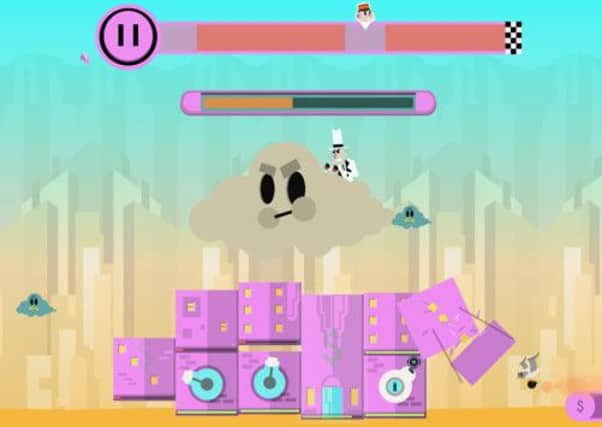Scotsman Games review: Bad Hotel, iPhone & iPad


Bad Hotel - Steam / Windows / Mac / iOS (reviewed)
Score: 8.7/10
To date, more than 20,000 Apple users have fallen under its numerous charms; with the expansion across three more formats, that number deserves to grow exponentially.
At first glance, it may seem like the latest addition to a crowded gallery of tower defence titles, a sub-genre plagued by jaded and formulaic ideas. Look closer, however, and you will discover a game which confounds the expectations made of it. Stubbornly refusing to be pigeonholed, Bad Hotel is best summarised as a melange of mobile game, sound design project and art installation. Or, in the words of Yann Seznec, Lucky Frame’s founder and director, it is quite probably “the first credit crunch satire musical tower defence game with Wu-Tang references on Steam this year.”
Advertisement
Hide AdAdvertisement
Hide AdSeznec is an artist, sound designer and musician, and it is telling that his company is no traditional game developer, having directed its talents to projects as diverse as instruments, interactive installations for schools and music remixing software. A common thread running through its five year history is the overriding importance of design, and nowhere is that more evident than Bad Hotel.
In a literal adaptation of the genre, the aim is to build a tower - namely a hotel block - while fending off the unwanted advances of a procession of idiosyncratic foes, ranging from seagulls and bees to yetis and vermin. With a small but well judged arsenal of building blocks at your disposal, finding the right combination can take time, particularly when the onslaught of enemies reaches a furious pace. Simple when explained, in practice the game is considerably challenging. Importantly, it does not punish mistakes, but gently cajoles players towards a solution.
Sound, unsurprisingly, is integral to the whole experience, with an ever shifting spectrum of audio accompanying progress through the levels, each element of the structure thrumming with notes and rhythms as it grows. By contrast, destroyed blocks emit flat notes, meaning that the soundtrack is not only decorative, but aids learning and progress throughout the series of levels.
So too, it has an enchanting individualistic visual style reminiscent of the great children’s book illustrator, Miroslav Sasek, with title screens evocative of the frontispiece from a book of Charles Rennie Mackintosh blueprints. In the same way the celebrated Art Deco style of Civilization V brought something new to the tried and tested field of turn-based strategy, the use of a distinct aesthetic has allowed Lucky Frame to run a Trojan horse through the tower defence market.
It is a hybrid enjoyed best by those who appreciate sound and art design as well as gaming, and the stubborn contingent of players who will find the whole concept of Bad Hotel too curious to embrace are the ones missing out. Its debut on Steam is an evolutionary step, given the platform is the natural home for titles offering endearing if taxing experiences. A beguiling product of flair and vision, this is a game that belongs on many a download list.